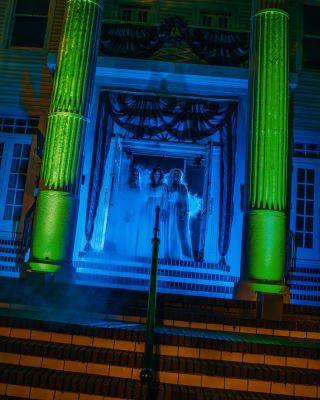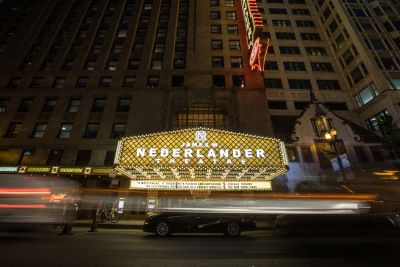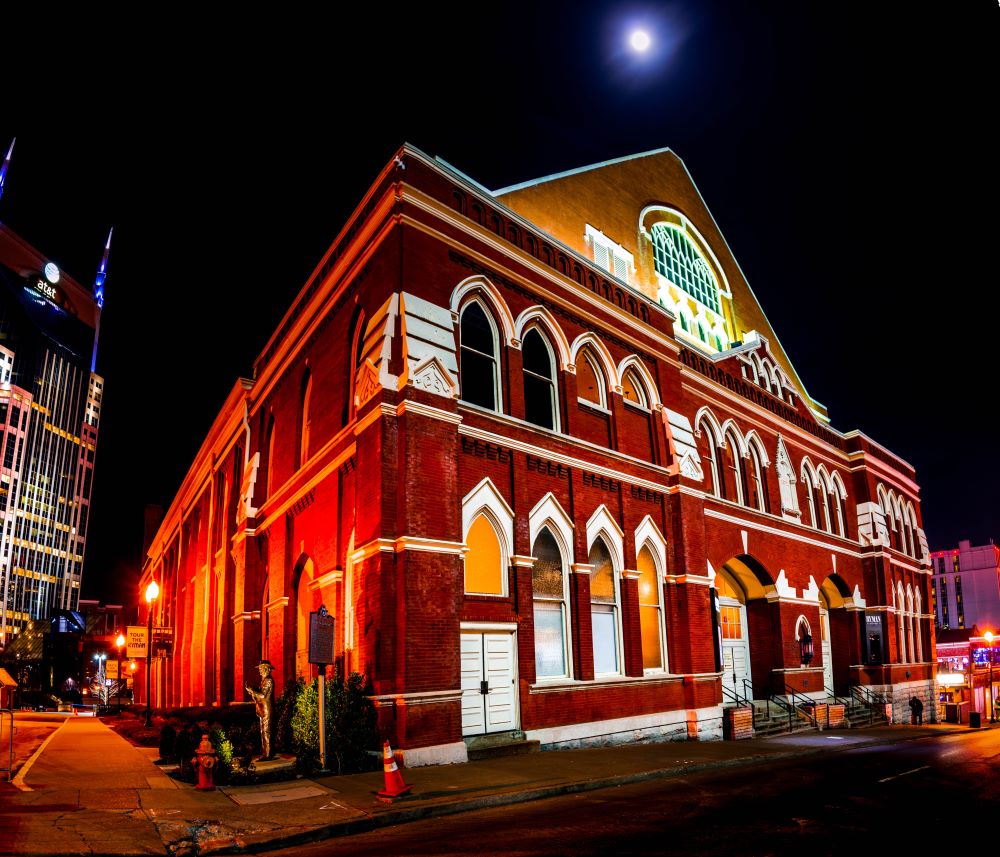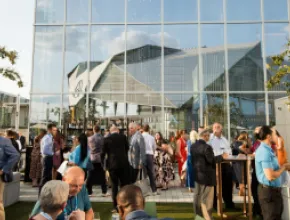It’s spooky season! And every horror film buff and Reese’s Peanut Butter Pumpkin lover knows the time for fall flavors on coffee shop menus doesn’t last long. The thrills and chills of Halloween only come once a year, and planning a mortifying event is bound to make it a memorable one, too.
If you’re hoping to fill your attendees’ trick-or-treat bags with happy haunts, the following three historic venues offer both scary stories and opportunities for groups to feel the fright.
The Mortuary, New Orleans

Sitting less than three miles from the French Quarter at the very end of Canal Street is an iconic Victorian Mansion reminiscent of old New Orleans. Built in 1872 by Irish immigrants Mary Slattery and her husband John (whose last name remains uncertain), the property was meant to serve as a multi-generational family home but it quickly took on another purpose that turned the once-marvelous mansion into a haunted house.
By the 1920s, Slattery’s family home was in the process of becoming one of New Orleans’ largest and stateliest funeral homes, surrounded by the tombstones sprawled across two of the city’s oldest cemeteries, according to NOLA.com. PJ McMahon & Sons ran as a mortuary for the next eight decades, equipped with an autopsy room, embalming room and onsite crematorium, Ghost City Tours reports.
Today, The Mortuary, as the former funeral home has been named, is one of New Orleans’ haunted Halloween staples along the cemetery streetcar line, offering world-class attractions and events full of fright. Groups can book The Mortuary for private events throughout the fall season when the haunt is active and arrange for experiences with or without actors at themortuary.net.
[Related: 5 Haunted Hotels for Ghostly Gatherings]
James M. Nederlander Theatre, Chicago
In 1903, a second infamous fire wreaked havoc in Chicago, burning the newly built Iroquois Theatre to the ground during its inaugural performance. The building was said to have been “fireproof,” but on opening night, it went up in flames with most of its fire doors locked shut, according to Choose Chicago.

By the time the flames went out, nearly 600 people were pronounced dead, and for five hours, rescue teams worked to recover the bodies. Afterwards, the alley behind the theater served as a temporary morgue, a Choose Chicago article states, and the path once known as Couch Place has since earned the common nickname “Death Alley.”
Next door to Death Alley stands the city’s iconic James M. Nederlander Theatre, where there have been reports of faint cries and distant screams, ghostly apparitions and feelings of being brushed against or shoved by what appears to be nothing at all.
Groups can experience these theatrical thrills for themselves by booking private events through Broadway in Chicago and arrange for a night spent in the historic theater at www.broadwayinchicago.com.

Ryman Auditorium, Nashville
Ryman Auditorium is a staple in the Birthplace of Country Music, with decades of history and stories of iconic performances from country music’s biggest stars that took place on its stage.
The historic music venue was initially constructed in the late 1800s by Thomas Ryman and opened its doors in 1892 as the Union Gospel Tabernacle. In 1901, the legendary auditorium stage was built, and when Ryman died in 1904, the property was renamed Ryman Auditorium.
Instead of being used as a house of worship like Ryman intended, the auditorium replaced prayer services with live concerts, plays and performances. Soon after the shows began, Ryman is said to have returned as a ghost, appearing when he didn’t approve of what he saw on stage or stomping around the room forcing the audience to leave, according to Ghost City Tours.
Nearly four decades later in 1943, Ryman Auditorium became the home of the hit country music radio show Grand Ole Opry, hosting rising country talent and broadcasting performances from the auditorium stage until 1974. Over the 30-year period, the often-gruesome deaths of 37 past performers, including Stringbean Akeman and Patsy Cline, stirred up rumors that Ryman Auditorium was cursed.
Grand Ole Opry relocated but the curse remained. Patrons started reporting a spirit commonly referred to as “The Grey Man,” describing him as a post-war Confederate soldier sitting in the balcony and watching musicians rehearse, Ghost City Tours reports. Some staff members say they’ve heard “The Lady,” believed to be the ghost of Patsy Cline, singing late at night and Hank Williams’ songs playing on stage around closing time.
Ryman Auditorium invites groups to experience “what happens after the show is over and the stage lights go dim” on a special guided 45-minute tour of the venue with once-in-a-lifetime access beneath its infamous stage. Alongside expert historians, groups explore Ryman Auditorium’s 131-year history of ghostly sightings and eerie occurrences. For more information and to book a private tour, visit www.ryman.com.
Read this next: 5 Spooky City Ghost Tours in America







